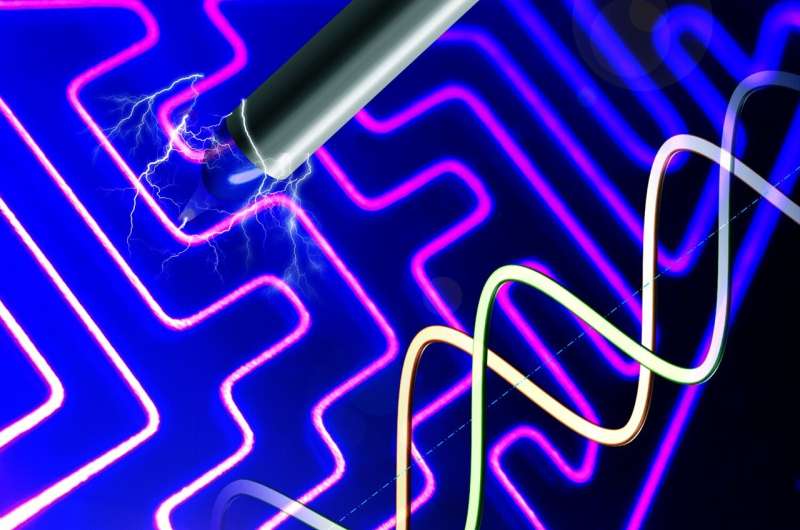Light for lithography could pass printed fibers

University of Utah researchers have developed a printed fiber-based light modulating system that combines polymer printing and quantum wave optics, providing a new lithography platform.
The unique advantages of the proposed microfabrication method include rapid direct-writing of reusable masks, extremely low process cost, and scalability, and these advantages will provide a niche lithography solution that can be positioned between the parallel mask-based lithography process and the serial mask-less lithography process. The research, led by Jiyoung Chang, assistant professor in U of Utah's mechanical engineering, is published in the journal, ACS Applied Materials & Interfaces.
Lithography plays a crucial role in academic research, advancing manufacturing as well as the semiconductor industry. However, state-of-the-art lithography methods still require access to expensive tools and facilities. Additionally, there is a lack of tools and NanoFab in the world; accessibility and usability are low. Thus, developing new lithography at low cost with fab-free processes is desirable.
As part of the work, the team combined two major components: an optical birefringent effect by which the phase of incident ultraviolet (UV) electromagnetic fields is modulated when passing through optically anisotropic mediums, and semi-crystalline polymeric microfibers patterned in programmable form using near-field electrospinning. By implementing the birefringent effect in one-dimensional (1-D) fibers, the researchers created reproducible masks. When placed between two linear polarizers that are perpendicular to each other, only the UV waves that are passing through the fibers can reach the photoresistor.
"Optical birefringence effect can phase-change the structure of light. Although birefringence has been used in applications that have mostly existed in two-dimensional space, like a liquid-crystal-display and polarimetry, we are reinvigorating the optical phenomenon through the fibrous selective exposure system," said Dr. Jonghyun Kim, a postdoctoral researcher in the Applied Materials Division of Argonne National Laboratory.
The researchers successfully demonstrated the key features of lithography, including straight, curved, array, and 0-D to 2-D isolations using 1-D fibers, as well as multi-alignments without aligning marks. The entire process, including fiber creation, reproducible UV exposure and alignments, is performed in a tabletop-scale system without the need for a clean-room facility. Researchers are now developing systems into nanoscale patterning.
"We believe this technology will meet the need for a reliable, scalable, and affordable lithographic method," Kim said.
More information: Jonghyun Kim et al. Fiber Lithography: A Facile Lithography Platform Based on Electromagnetic Phase Modulation Using a Highly Birefringent Electrospun Fiber, ACS Applied Materials & Interfaces (2020). DOI: 10.1021/acsami.0c01314
Journal information: ACS Applied Materials and Interfaces
Provided by University of Utah




















